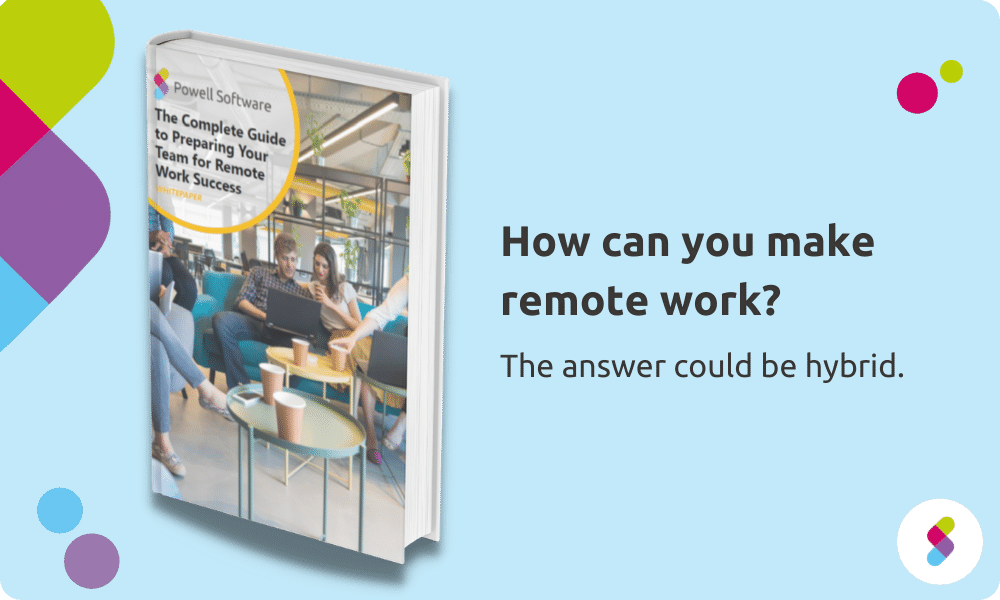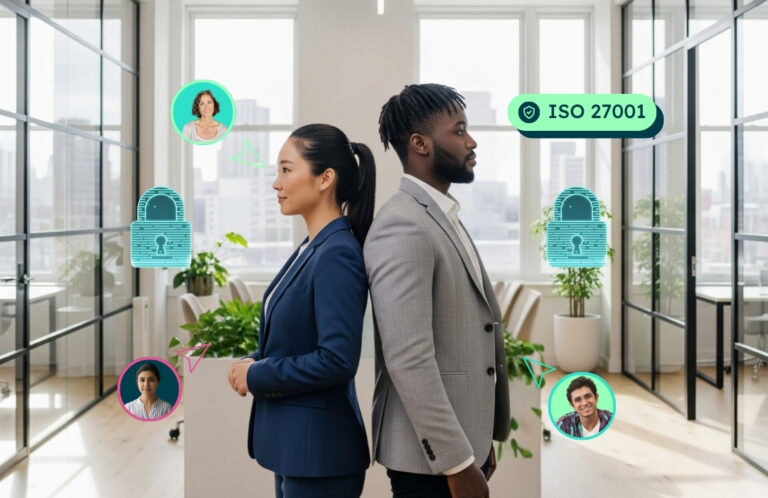The digital dexterity definition laid out by Gartner is “a set of beliefs, mindsets, and behaviors that help employees deliver faster and more valuable outcomes from digital initiatives”. Employees with higher digital dexterity are more willing to try and take risks with new technologies.
Research shows that only 9% of workers currently meet the criteria associated with digital dexterity. However, this small group is responsible for the majority of today’s digital workplace initiatives.
So how can employers promote digital dexterity at work and encourage better engagement among employees? We’ll take a closer look at the strategies that take both tech and human-centric considerations into mind as you move your company towards digital adaptation.
Digital dexterity begins with company culture
If there’s one thing corporate leaders can agree on when it comes to digital dexterity, it’s that it finds its roots in company culture. If the atmosphere is not supportive of new initiatives and risk-taking, employees will have difficulty embracing the digital dexterity meaning and may abandon it entirely. Promoting digital dexterity at work means supporting certain behaviors that will allow it to prosper.
While digital skills and tech-savviness are clearly a key component of digital dexterity, so are other qualities. Employees must be collaborative, flexible, and open-minded. In fact, even individuals with less technical abilities may find themselves on the higher end of the digital dexterity spectrum if they are willing to take chances and remain open to new ways of working.
Interestingly, research from Gartner finds that digital dexterity is not necessarily limited to younger generations. Millennials have not been shown to be any more digitally dexterous than their older peers. However, some industries and workplace functions show better tendencies towards digital dexterity than others, especially those in tech-focused industries or who hold more senior roles.
Digital dexterity in the workplace: the benefits
Digital dexterity at work is hard to come by, but the benefits brought by those employees who are highly digitally dexterous are invaluable. According to Gartner, these employees are three times more likely to have a positive impact on business outcomes than their peers. Here are just a few ways that digital dexterity can benefit your workplace:
- Higher flexibility. Digitally dexterous employees are more willing to try new roles and wear different hats in order to support the company’s adaptation to a digital workplace.
- More autonomy. Employees are more willing to work on projects with initiatives and requirements that change or are unclear. They understand that they play a part in determining the keystones of these projects.
- Better efficiency. As digital opportunities emerge, employees take advantage of and adapt them in order to improve their own department’s productivity.
- Remote workability. Remote work is possible as long as the right technologies are in place. Our top remote work tip? Implement a comprehensive remote work solution.
- See the bigger picture. Employees with high digital dexterity understand that digitalization benefits the company as a whole and are willing to take risks in order to pursue this end result.
Dos and don’ts of digital transformation
As you guide your company towards a digital framework and implement new digital solutions, there are a few strategies to keep in mind. These should be embodied by all company leadership to see the best outcome from digital transformation initiatives.
DO create a company-wide narrative. In order for the entire employee pool to embrace digital transformation, they need to be united behind a common goal. This goal is best communicated through a narrative. This narrative should explain the need for the transformation, why it’s important, and how the change will be made.
DO lead by example. Gartner finds that while only 16% of leaders meet the requirements of high digital dexterity, employees of these leaders are 2.4 times more likely to share the same qualities. Lead by example and be among the first to embrace new workplace technologies.
DO adapt internal operations. Are your company’s daily operations helping or hurting digital dexterity? Take a close look at any policies and metrics that might need to be tweaked in order to promote the organizational mission of digital adoption.
DO set expectations. Each employee should have their role clearly defined in the overarching digital transformation. Set clear expectations and set up checkpoints to evaluate each employee’s personal progress along the way.
DO identify barriers. A key part of embracing digital dexterity at work is identifying potential challenges ahead of time in order to meet them head-on. Employees can help in pinpointing future challenges in their own roles and coming up with solutions through workshops and one-on-one meetings with managers.
DON’T forget the customer. At the end of the day, any digital initiative should have the customer’s best interest in mind. If an initiative doesn’t support the customer’s needs, it might not be worthwhile.
A human-centric solution
When embracing digital change, remember that the end solution needs to be human-centric – and that, statistically speaking, the majority of your employee pool will not have the digital dexterity to navigate a digital transformation without guidance. To this end, your digital initiative should include plenty of training and support for both new and existing employees.
We’ve already explained the importance of examining internal operations and adapting them to promote digital dexterity. The employee onboarding process is no exception. Take a look at the recruitment process and see which processes could benefit from better streamlining and modernization. Only 12% of employees are highly satisfied with their company’s onboarding process, which is one of the main justifications given by employees that quit within the first 90 days. This can be remedied by the right digital tools that help set the tone and promote digital dexterity from day one.
But workplaces may face even larger obstacles with change management among existing employees as they head towards digital transformation. A McKinsey study found that commitments toward long-term sustainability and organization-wide change were the most important capabilities in successful digital transformations. What does this mean? Managers need to communicate clearly, long-term strategies, and take accountability for seeing digital initiatives through from start to finish.
No matter the end goal, you’ll find that uniting employees behind a common vision is the best way to drive digital dexterity among your workforce. From training your team on new internal technology to introducing a next-generation product to the market, the overarching narrative that drives the entire digital transformation will determine your success.
Setting your team up for remote work success can seem daunting at first. There is a lot to consider to ensure a smooth transition. Fortunately, with the right planning, your team can thrive in their remote roles. We’ve put together this comprehensive guide to help you make the move to remote work.
Powell Software develops inclusive digital workplace solutions to improve the employee experience. Our intuitive platform is accessible and easy to use for both end-users and admins. Get a demo today to discuss your needs and see the digital workplace in action.




